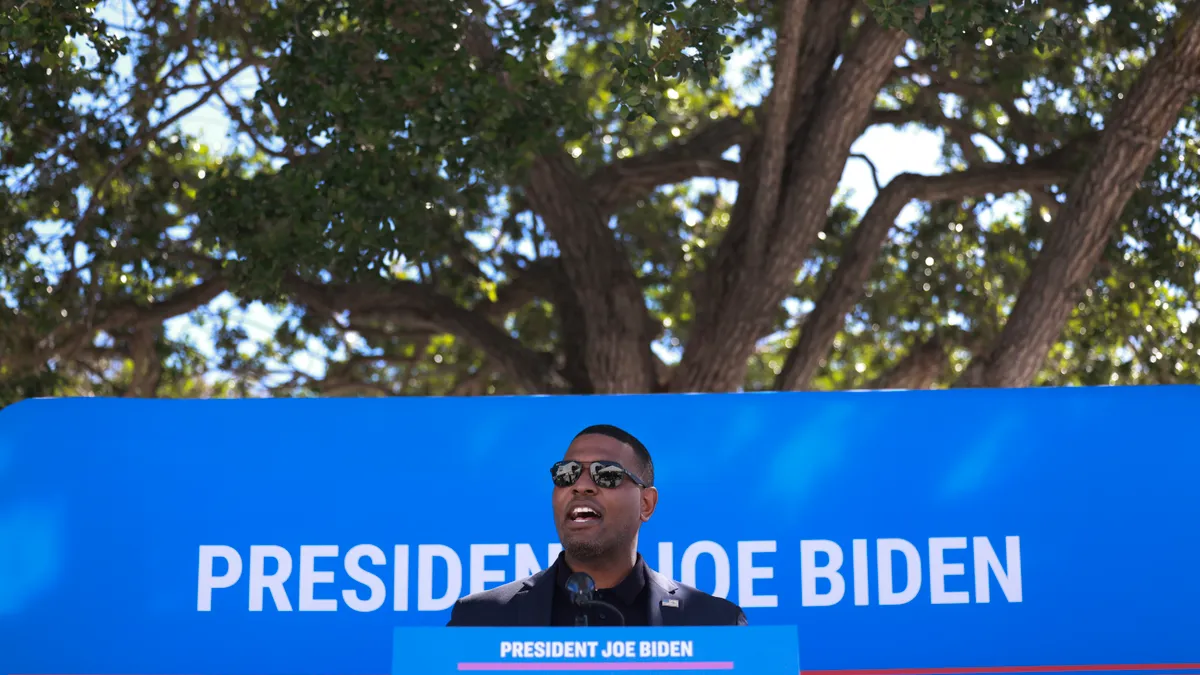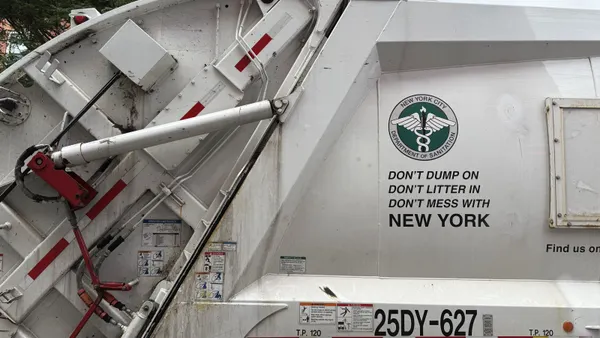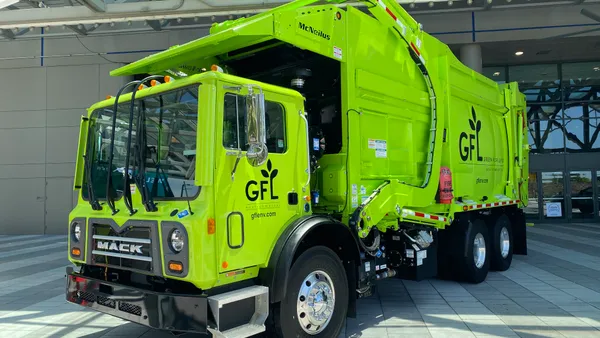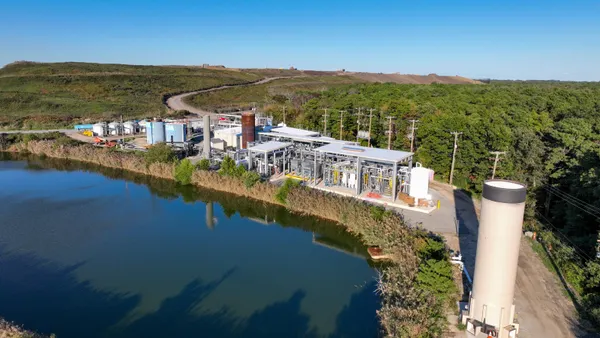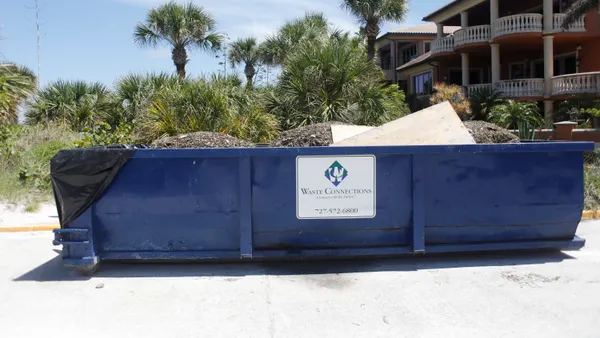Dive Brief:
- The U.S. EPA plans to issue a proposed rule updating air emissions standards for municipal solid waste landfills in 2025, the Biden-Harris administration confirmed in an announcement Wednesday.
- The commitment follows EPA adding such an update to its unified agenda earlier this month, a regulatory step that indicates the agency's priorities in the near term.
- This would be the first update to Clean Air Act emissions standards for new and existing MSW landfills since 2016. The regulation technically requires an update every eight years, but the agency is expected to run past its August deadline by several months.
Dive Insight:
The EPA has faced mounting calls from environmental groups and certain lawmakers to issue an update. The Biden administration has made addressing methane from all sources a priority, including by releasing the U.S. Methane Emissions Reduction Action Plan.
The administration’s statement on Wednesday came after officials held what they called a White House Super Pollutants Summit, which they said featured “companies, environmental organizations, unions, philanthropies, and international partners.” The statement highlighted the administration’s actions to date on methane across sectors, including oil and gas. Methane has long been called a climate “super pollutant” because its global warming potential is about 80 times more potent than carbon dioxide on a 20-year timescale.
Besides confirming the timeline for a landfill emissions update, the statement also highlighted public-private collaborations between NASA, NOAA, Carbon Mapper and the Environmental Defense Fund to use new technologies to monitor pollutants like methane.
The Biden administration has previously taken action to address methane from landfills. It began enforcing the 2016 update to the Clean Air Act rules for landfills in 2021, ending a Trump-era delay and court battle that prevented the rules from going into effect. That update tightened the New Source Performance Standards and Emissions Guidelines for new and existing landfills, respectively.
The National Waste & Recycling Association, which praised the added certainty that came in 2021 but has since criticized air emissions regulations as out of step with the industry today, did not respond to a request for comment.
Environmental groups have praised the Biden administration's actions, but also argued the current landfill emissions standard doesn't go far enough to meet climate commitments. At a Senate hearing in January, advocates urged lawmakers to pressure EPA into an update. They said monitoring technology has evolved to the point that greater emissions detection and mitigation is possible than current federal standards require.
Those calls have become more vocal. On July 16, Sen. Alex Padilla, D-Calif., said on a call with reporters that he was glad to see the EPA add the proposed rulemaking to its agenda but wanted the agency to “move swiftly” to issue and finalize a rule.
“If we're serious about the urgency of combating the climate crisis, then we have to be just as serious about the urgency of reducing methane emissions,” Padilla said. “We can't afford to leave any methane emission reductions on the table.”
Representatives from RMI and Carbon Mapper also joined the call. They echoed Padilla’s calls for action, and also advocated for satellite and other flyover technology to be incorporated into the update to reflect methods that have been piloted in North America for years.
John Coqueyt, director of US government affairs at RMI, said on the call that environmental groups like his were already providing the EPA with information as needed as agency staff drafted a proposed rulemaking.
While the Clean Air Act update should have been released in August and now won't be, Coqueyt said taking legal action wouldn’t make the process run any faster. Barring any changes in agency strategy, including those that may come from the presidential election, he expects collaboration between environmental groups and EPA staff.



